Advanced Cold-Box Resin Systems for Precision Foundry Casting
This is not a contradiction: The Cold-Box process has been the leading core production process for series casting for 50 years. In sync with the further advances in castings for highly developed consumer markets, HA, as one of the leading foundry chemical suppliers, has continuously optimized its binder systems ever since. A comprehensive product range is now available, especially for the Cold-Box process, so that foundries can always find the optimum binder solution depending on the area of application and their individual requirements.
HA's Cold-Box binder systems strike the perfect balance: lower emissions and uncompromising performance.
The Strengths of Cold-Box Technology
The Cold-Box system owes its position as the leading core production process to its wide range of applications, efficiency, and cost-effectiveness. Excellent strength properties and very good dimensional accuracy mean that Cold-Box cores meet the growing demands placed on modern castings. Special technical criteria, such as elasticity, thermal stability, and low gas generation, have also been continuously optimized.
Innovative Cold-Box binder systems from HA enable:
- The highest levels of casting quality
- Highly complex casting structures
- Minimal wall thickness
- Highly automated production
- Casting of various alloys
Production-related advantages from the foundry's point of view:
- No heated core box required
- Flexibility when selecting the tooling material (plastic, wood, metal)
- Proven, robust process
- Fastest possible cycle times
- Optimal decomposition properties
- Good reclaimability of core sand
- Excellent shelf life of cores
- Lowest binder addition
Technological Milestones of the Cold-Box Process
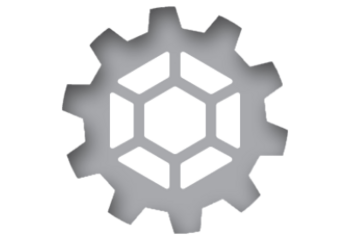
Curing Technology
Developing and improving curing technology

Core Package Application
A very effective way to produce high-quality products
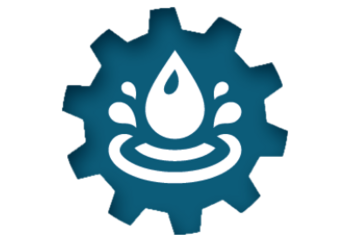
Application of Water Coatings
Improved water and moisture resistance of the cores
Focus of Development: Improved Environmental Properties
An increasing challenge for foundries, however, is meeting ever-stricter environmental requirements. Since emissions in the Cold-Box process are inherent to the system, efforts to further develop Cold-Box binders have focused not only on technological optimization but also on improving environmental properties. For more than three decades, the research department of HA has been dedicated to reducing the environmental impact and emissions from its products. Our research and development aim to reduce emissions step by step through the reduction of organic components.
Solution Approaches
- Performance improvement to allow for reduced quantities of additives
- Replacing aromatic solvents
- Use of inorganic elements in organic binders
HA has pursued all these product development paths over recent years and decades, resulting in our three product types: Sigmacure, Biocure, and Silcure.

Sustainability Milestones of the Cold-Box process

Reclaiming
Developing binder systems suitable for different sand qualities
Amine Recycling
Reduction of emissions saves crucial resources

Reduction of Aromatic Solvents
Use of renewable resources
Improved Workplace Conditions
Reduction of free monomers and harmful ingredients

Reduction of Organics
Significant savings through Silicatic CB Systems, inorganic additives

Biocure: Almost 30 Years of Experience with Plant-Based Solvents
In 1996, HA was the first supplier in the world to launch a patented, more environmentally friendly Cold-Box alternative, which enabled both a reduction in odor emissions during core production and a significant reduction in VOC's and HAP's emissions. HA has replaced the aromatic solvents in Biocure products, for example, by using methyl esters that are obtained from plant-based, renewable raw materials such as rapeseed. Since the chained (aliphatic) molecules contain more hydrogen and less carbon, CO2 emissions are also reduced.
- HA is the only manufacturer with almost 30 years of experience with plant-based CB
- Use of renewable raw materials
- Reduced VOC's and HAP's emissions
- Reduced odor during core production
- Reduced catalyst consumption
- Superior separation of core and tool
- Elimination of casting defects such as erosion and scabbing due to high heat resistance
- Excellent dimensional accuracy
- Particularly suitable for casting in the bentonite-bonded molding material
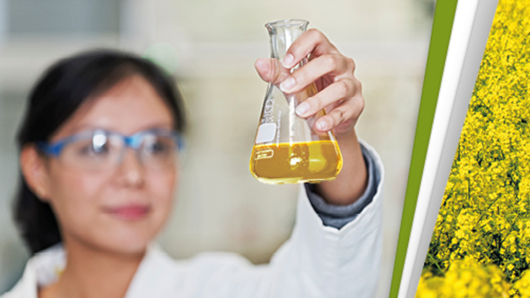
Sigmacure: A Robust Classic
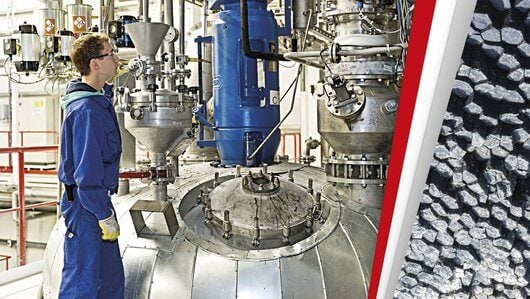
Sigmacure is the universal classic product: a Cold-Box binder system in which the two components, phenolic resin, and polyisocyanate, come dissolved in aromatic solvents. This system provides foundries with a product line whose efficiency is based on decades of experience.
- High productivity, fast cycle times
- Good processability, good sand durability even with moderate sand quality
- Moisture-resistant, even under difficult climatic conditions
- Many customized variants for special requirements
- Suitable for any existing equipment
- High process safety
Silcure: Inorganic Elements in Solvent
In 1999, HA introduced Cold-Box systems with shares of silicate-containing solvents to the foundry industry. These solvents contain Si compounds in the molecule instead of hydrocarbons. A lower carbon content results in reduced VOC's, HAP's, and CO2 emissions.
- High thermal stability
- Very low condensate formation, thus less cleaning effort
- Low gas formation, thus fewer casting defects (scabbing, gas defects, pinholes)
- Very suitable for die casting
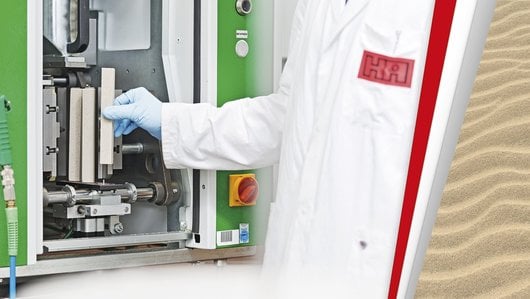
Additives
Additives are required to both reduce casting defects and achieve specific properties. They are organic, inorganic, or mixed. Inorganic additives can make a major contribution to reducing foundry emissions (CO2, pollutants, odor, and smoke).
Strengths of new-generation Korplete additives
- Small amounts needed
- High strength
- Excellent anti-veining effect
- Minimal gas formation
- Hardly any erosion tendency
- Allows uncoated casting in many cases
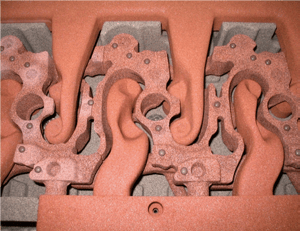
Your Contact
Aaron Kaboff
Product Manager Resins
.png?width=350&height=350&name=Untitled%20design%20(45).png)
.png?width=268&height=81&name=logo-new2%20(1).png)
